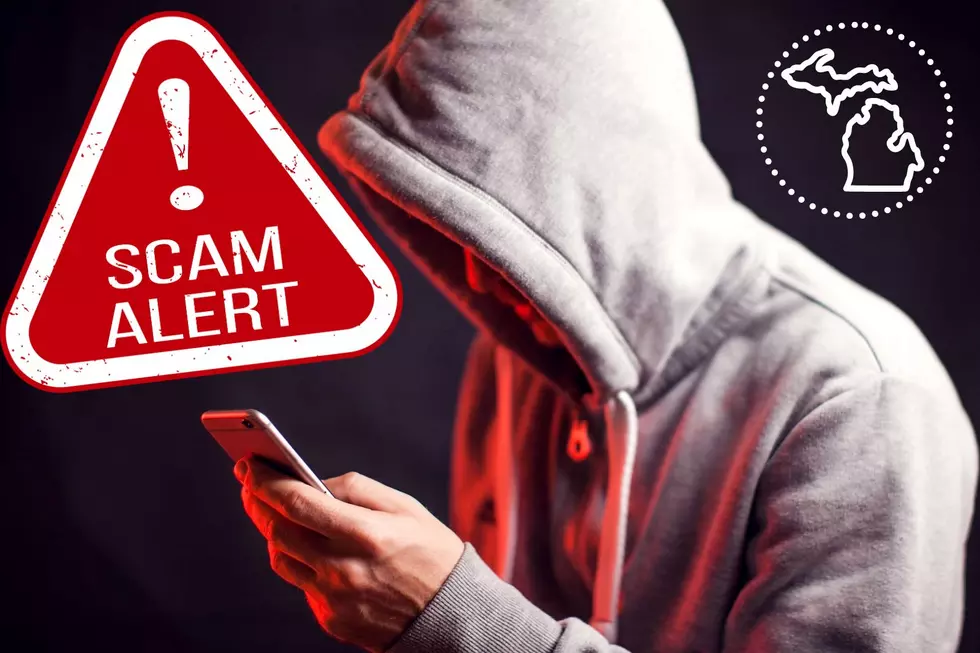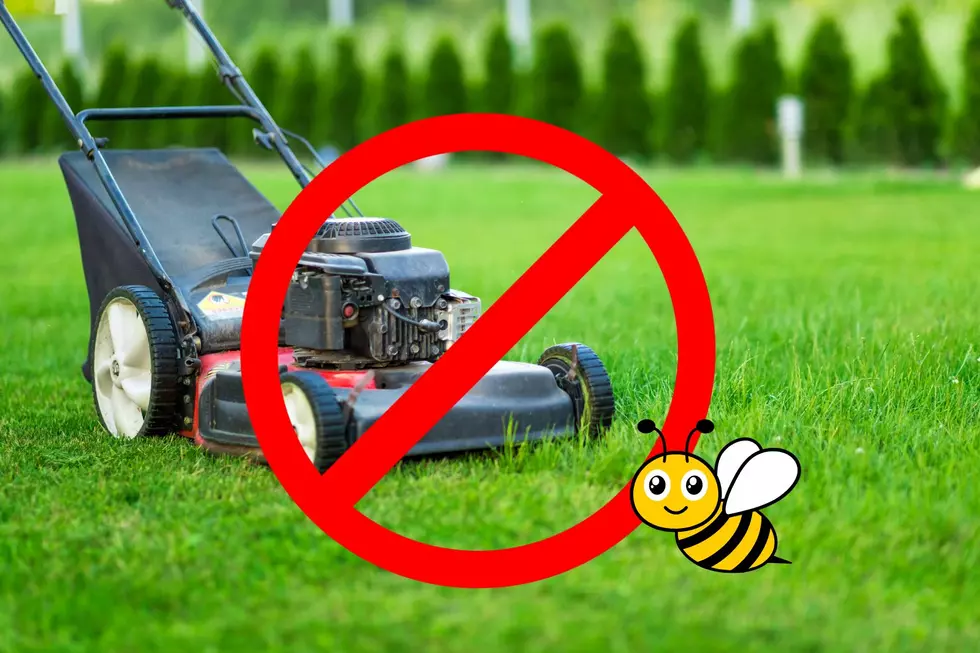
10 Year Old Boy Calls 911 To Try And Save His Mom’s Life
A 10 year old boy from Commerce Township called 911 to let police know his parents were fighting and his father had a knife.
When police arrived, the Father answered the door covered in blood as his wife was on the floor deceased. The Detroit Free Press reported...
"The sheriff's office hasn't publicly identified the female victim, 38, or male suspect, 36, in what it described as a "murder" investigation. Online records show former Quicken Loans executive Noah Ian Ravenscroft, 36, was booked Tuesday into Oakland County Jail on unspecified charges."
All three of the couples children were found upstairs in the residences safe. Friends of the family claim they seemed "happy", and they are "heartbroken" over this tragedy.
The really sad thing is that no one really knows what is happening behind closed doors. Many families are surrounded by domestic violence, and loved ones miss the signs. According to ncadv.org here are things to look for. Maybe during a conversation a friend or family member mentioned a sign that is a red flag.
Some Examples Of Abuse Are (but not limited too)
- Telling the victim that they can never do anything right
- Showing jealousy of the victim’s family and friends and time spent away
- Accusing the victim of cheating
- Keeping or discouraging the victim from seeing friends or family members
- Embarrassing or shaming the victim with put-downs
- Controlling every penny spent in the household
- Taking the victim’s money or refusing to give them money for expenses
- Looking at or acting in ways that scare the person they are abusing
- Controlling who the victim sees, where they go, or what they do
- Dictating how the victim dresses, wears their hair, etc.
- Stalking the victim or monitoring their victim’s every move (in person or also via the internet and/or other devices such as GPS tracking or the victim’s phone)
- Preventing the victim from making their own decisions
- Telling the victim that they are a bad parent or threatening to hurt, kill, or take away their children
- Threatening to hurt or kill the victim’s friends, loved ones, or pets
- Intimidating the victim with guns, knives, or other weapons
- Pressuring the victim to have sex when they don’t want to or to do things sexually they are not comfortable with
- Forcing sex with others
- Refusing to use protection when having sex or sabotaging birth control
- Pressuring or forcing the victim to use drugs or alcohol
- Preventing the victim from working or attending school, harassing the victim at either, keeping their victim up all night so they perform badly at their job or in school
- Destroying the victim’s property
What To Do If You Think Someone Is In An Abusive Relationship
- Don’t judge the victim (you are not in her situation).
- Avoid telling the victim that she needs to leave (she already knows that she needs to leave but she does not feel she can); instead discuss a safety plan.
- Don’t tell her that the abuser is a jerk, that you never liked him, etc. (That might drive her away or make her feel she has to defend him.)
- Become the victim’s confidante. Listen to everything she tells you. (You could be a good witness later by backing up her story.)
- Assure her you will keep what she tells you confidential. (This will help you gain her trust so she will be more likely to call you if she finds herself in a very serious situation, e.g., trying to escape.)
- Ask her what the situation is like for her. (Her abuser may: physically abuse her; make rules that are forever changing; punish her for breaking his rules; criticize her; humiliate her; prevent her from seeing friends or family, or from going to school, work or her place of worship; accuse her of lying or being unfaithful; force her to do things she does not want to do or that make her uncomfortable; monitor what she does; monitor how much money she spends, make her beg for money or demand to see every receipt; destroy the things she cares about; spy on her; blame her for his misdeeds; insult her, call her names or spit on her; tell her friends, family or neighbors nasty things about her; threaten to hurt or kill her, the children or those she loves (including pets), or to kill himself; threaten to abduct (kid- nap) the children, get custody of the children, and/or threaten that she will never see her children again; threaten to put her in a mental hospital; falsely accuse her of drinking or using drugs; or force her to do illegal things.)
- Let her know that:
- You are afraid for her safety.
- You are afraid for the safety of her children.
- This is not her fault; no one deserves to be abused.
- Even if her abuser apologizes, it does not mean he will stop abusing her.
- Alcohol does not cause abuse; many alcoholics never abuse, and most abusive alcoholics who stop drinking continue to abuse.
- There is a good chance the abuse will only get worse.
- She is not alone; you will be there to help her, or to help her find others who can help her (be realistic). Pick a code word for her to use to have you call the police (or pick up her children from school).
- Let her know that abusers usually snoop on their victims to learn what they are doing and who is supporting them. He may well check her car to see how many miles she has driven, and/ or check her phone or computer for messages and contacts. With today’s electronic security he may even have bugged her phone, computer, or put GPS on her car so that he will know everywhere she goes. (See Resources.)
- Let her know that her abuser will most likely try to isolate her from anyone who is supportive of her (including her children, and even you) by driving her and her supporters away from each other. Common tactics are to disparage one (or both) to the other, to make it very difficult for her to see supporters, and, if all else fails, threaten her or those supporting her. Tell her if you know he is doing such things. (Be aware that he may be talking to your friends and family, or even snooping on you to find out what you are doing to support her.)
- Let her know that women who are abused by their male partners are three times as likely to get infected with HIV, and that her risk is much higher if her abuser is engaging in risky activity or causing her to engage in risky activity. She may want to get tested for HIV, and get treated if she tests positive.
- If it is safe for you to do so (and nobody in your household will tell her abuser), offer to let her store some emergency things in your home in case she (and, ideally, her children) need to leave quickly. These should include information about her abuser’s driver’s license, car registration and workplace address (often needed to get or register an order of protection), and his and her financial data (like credit cards, bank accounts, insurance policies), her emergency and important phone numbers, prescription information (and even an emergency supply of medications), and her children’s immunization records. It should also include information about any firearms he has. (For safety plans, see No. 18, and Resources at the end.)
- If she has children:
- Let her know that most people who abuse their partners are not good parents, that most of them physically or sexually abuse the children, and that, if nothing else, they are poor role models for the children, and they often become worse as the children grow older.
- Let her know that you know it is hard for the children to be in this situation, and that children are much more harmed by living in a home with domestic violence than they are by divorce or separation.
- Let her know that, unless she has court permission to relocate, she may lose custody if she flees with the children to another state. She should work with domestic violence advocates or a lawyer if she plans to leave with the children.
- Let her know that if she leaves with- out one or more of her children and wants custody of them or to protect them, she should talk to a lawyer or domestic violence advocate about getting an order of protection and/ or custody order, and the sooner she does this the better.
- She, you or somebody should tell the children that abuse is wrong.
- She, you or somebody should teach the children that they should never get in the middle when one parent is abusing the other, that they should go somewhere where they will be safe and, if they can do so safely, call the police.
- She, you or somebody should teach the children how to call the police for help, how to give their name, the address where they are calling from, and a brief explanation of why help is needed (e.g., daddy is beating up mommy). They should know that dialing 911 on a cell phone may not get the local police.
- If she does not have children, let her know that:
- It is easier to get out of a bad relationship when there are no children, and that abusers control their women through the children;
- Abusive men often sabotage their female partners’ use of birth control to get them pregnant;
- Having children almost always makes abusers more possessive and abusive.
- Encourage the victim to document everything that happened, including an accurate account of how she was injured. Suggest that she get medical treatment.
- If she has injuries, ask her if you can take pictures of them to keep at your home or other safe place. (Assure her it is to document the injuries when she is ready to call the police or go to court. Date the pictures and keep them with notes about when, where and how she got the injuries. She may need several copies or enough pictures to use to get an order of protection, if criminal charges are brought, and to use in a divorce and/or custody case.)
- Document all the dates and times that you see injuries on the victim, even if she denies he caused her injuries. The victim may have gone to the hospital but did not tell you or was too ashamed to tell you.
- If the abuser has destroyed or damaged household property, with her permission, have the police, you or somebody else take pictures of the damage. Store the pictures in a safe place with the date, time and description of what each picture shows so she can use them in court if she wants.
- Tell the victim about her local domestic program and give her its phone number or that the National Domestic Violence Hotline (1-800-799-7233) for help in developing a safety plan and obtaining information about emergency shelter/relocation, restraining orders and advocacy programs in or out of her area.
- Be aware that clergy vary, and while some clergy are really helpful in cases of domestic violence, many others are not. The local domestic violence program is likely to know who will be helpful if the victim wants to talk to a member of the clergy.
- If the victim is going to leave her abuser, tell her not to tell her abuser or anyone who might tell him in advance.
- Offer her a safe place, if this is realistic, or help her find one.
- If the victim leaves the relationship, do not disclose her location, especially to mutual friends or family members of the abuser. (Her safety is paramount.)
- If the victim is suicidal this is an indication of just how desperate she feels; she needs help (ideally without letting her abuser know).
In the end we need to take care of each other so another 10 year never needs to make that 911 call.
Love and prayers to the family and friends of the victim and her children.
More From WKFR








